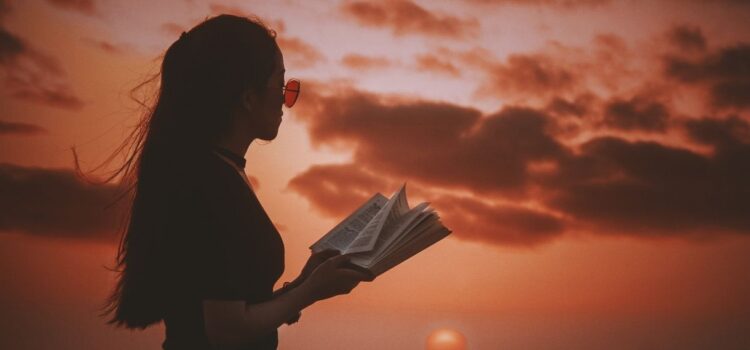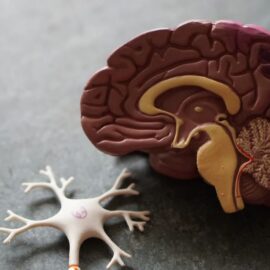

This article is an excerpt from the Shortform book guide to "The Power of Your Subconscious Mind" by Joseph Murphy. Shortform has the world's best summaries and analyses of books you should be reading.
Like this article? Sign up for a free trial here .
What is The Power of Your Subconscious Mind by Joseph Murphy about? What is the key message you can take away from the book?
In his book The Power of Your Subconscious Mind, Joseph Murphy claims that all of your life experiences are the result of the interaction between your conscious and subconscious minds—your subconscious mind creates your life experiences according to your habitual conscious thoughts and ingrained beliefs. Murphy argues that you can use your conscious mind to imprint positive thoughts upon your subconscious mind.
Below is a brief overview of the key takeaways.
Part 1: Your Subconscious Mind Creates Your Life Experiences
In his book The Power of Your Subconscious Mind, Joseph Murphy claims that all of your life experiences are the result of the interaction between your conscious and subconscious minds.
Murphy explains that your conscious mind is your active mind. It contains all of the thoughts and feelings that you’re aware of at any given moment. You use it to judge your environment and to make choices and decisions based on these judgments.
(Shortform note: Research backs up Murphy’s judgment of the conscious mind as your active mind. According to Brian Tracy (Eat That Frog!), your conscious mind continually identifies, compares, and analyzes all of the information you perceive so that it can make decisions about what is relevant to you. However, Tracy notes that your conscious mind functions like a binary computer—it has no memory and can only think one thought at a time.)
Meanwhile, Murphy explains that your subconscious mind is your passive mind. It’s always awake because it regulates all of your bodily functions, and it records and stores your every experience even when you’re not consciously paying attention. Over 90% of your brain’s activity takes place in your subconscious mind: It’s a reservoir of thoughts, feelings, and memories that lies beneath your conscious awareness.
(Shortform note: There is still much to be learned about how the subconscious mind works, but even in 1963, Murphy was right about its importance—neuroscientists have confirmed that 95% of your brain activity takes place beyond your conscious awareness, in your subconscious mind. Further, research reveals that your subconscious mind makes decisions about how you choose to feel or act before your conscious mind even perceives the need to make a decision.)
Your Habitual Thoughts Imprint Upon Your Subconscious Mind
Murphy claims that your subconscious mind is impersonal because it passively accepts your habitual conscious thoughts without question. In other words, it doesn’t judge any of your conscious thoughts (in the same way that your computer doesn’t judge the documents you save onto your hard drive). All of the thoughts you think in your conscious mind filter down into your subconscious mind and leave an impression. The more often you think certain thoughts, the heavier the impression you leave on your subconscious mind.
According to Murphy, the way your conscious thoughts imprint upon and mold your subconscious mind determines your personality traits and how you respond to your life experiences. This is because your habitual thoughts train your subconscious mind to create associations and shortcuts between all of the thoughts, feelings, and experiences it has stored.
Murphy also claims that your subconscious mind forms conclusions about what your overarching beliefs are based on your habitual conscious thoughts. It then automatically relies upon these overarching beliefs to process and catalog all of the information it records.
(Shortform note: Murphy claims that your subconscious mind passively and impersonally carries out the orders it’s given based on your habitual conscious thoughts and overarching beliefs. However, he doesn’t mention that while your subconscious mind is at the mercy of your conscious mind, it also influences your conscious mind to think in specific ways and leads you to act automatically in ways that align with your overarching beliefs. According to Maxwell Maltz (Psycho-Cybernetics), the conclusions that your subconscious mind forms about your beliefs and how it should respond to your experiences affect the way you engage with the world by triggering your emotions and leading you to react in specific ways to your environment.)
You’re Connected to a Powerful Force
Murphy argues that while your subconscious mind does influence your feelings and behaviors and lead you to create certain situations based on these reactions, it also plays a far more important role in your life: It creates specific life experiences that align with your habitual conscious thoughts and beliefs.
How exactly does your subconscious mind create life experiences? Murphy claims that your subconscious mind is connected to a “Higher Power,” or Universal Consciousness—the invisible power or “life force” that created and continues to manage the entire universe. According to Murphy, this force lives within all organic and inorganic matter, connects us all, and governs all of the interactions that underlie the universe.
(Shortform note: Murphy refers to this power as “God,” “Infinite Intelligence,” and a “Higher Power.” We’ll refer to this concept as “Universal Consciousness” throughout the rest of this guide for clarity and consistency.)
How Your Subconscious Mind Orchestrates Your Life Experiences
Murphy argues that your subconscious mind is infinite and has no limitations: There is no limit to the amount of information it can record and store, and its connection to Universal Consciousness gives it access to all of the information in the universe. Through this access, it orchestrates interactions and creates experiences that line up with your habitual conscious thoughts, expectations, and beliefs. These results reflect both how you feel about yourself and what you expect to experience in your life. They encompass every area of your life including your health, relationships, finances, and career.
Murphy claims that your subconscious mind leads you to these experiences through the use of intuition. Each time you feel inspired, have a gut instinct, or the impulse or urge to do something, this is your subconscious communicating and guiding you towards specific life experiences that match your habitual conscious thoughts. Murphy’s theory explains the coincidences and serendipitous moments that occur in your life.
For example, you’re on your way somewhere but feel impelled to take a different route. This route leads you to bump into someone you were planning to get in touch with. Though you may pass it off as a happy coincidence, Murphy argues that this is your subconscious mind creating your life experiences.
You’re Designed to Feel Healthy and Happy
Murphy believes that Universal Consciousness is a benevolent force that your subconscious mind is connected to, and the natural by-products of this force are positive: vitality, bliss, and forward motion. Because you have an innate connection to this force, you are a physical extension of this positive force—he explains that a stream of positive energy flows within you to nurture you both physically and emotionally, and around you to create joyous life experiences. Consequently, Murphy concludes that you’re designed to think in ways that align with this energy so that you can live in a constant state of bliss.
(Shortform note: The belief in an inherently good higher power lies at the forefront of most dominant religions. Yuval Noah Harari (Sapiens) explains that the idea of a benevolent God originally arose from the human need to control our environment: Humans created Gods and assigned them the power to control the things they couldn’t (epidemics, droughts). By assigning these Gods with personalities and biases, humans could believe that these Gods took an active interest in the human world and that they could pray for intervention. Further, the act of turning things over to a higher power gave humans a way of rationalizing uncontrollable events and the resilience to face challenges and upheavals.)
Part 2: Negative Thoughts Create Failure and Disease
According to Murphy, the impressions your conscious thoughts leave on your subconscious mind influence the way it interacts with the positive flow of Universal Consciousness. If you’re not entirely happy with your life experiences, it’s because you’re thinking “false” negative thoughts that contradict the positive force of Universal Consciousness. Let’s explore this idea in detail.
Why Your Negative Thoughts Are “False”
Murphy argues that negative thought patterns arise due to your lack of faith in your benevolent higher power. If you trusted it to work on your behalf, you’d have nothing to fear and no need to struggle because you’d know that this higher power is working to help you. But, your lack of faith leads you to the false conclusion that you have to struggle by yourself and force things into place if you want to achieve any sort of success or happiness in your life. As a result, you feel alone and unsupported, and, when things don’t go the way you want them to, you suffer from low self-confidence and poor expectations. Your subconscious mind then fulfills these expectations by creating difficult and uncomfortable experiences.
How Your Negative Thoughts Create Self-Fulfilling Prophecies
Murphy argues that every time you think negative thoughts, you block your subconscious mind from accessing both the useful information you have stored in your mind in your subconscious and the positive energy flowing from Universal Consciousness that creates positive experiences. As a result, your subconscious mind creates negative experiences that align with your fears and worries. According to Murphy, your negative thoughts impact your mental and physical health and your ability to create success and happiness in all areas of your life.
(Shortform note: Research on the topic of cognitive distortions supports Murphy’s argument that negative thoughts contribute to negative life experiences. Cognitive distortions are irrational thought patterns that manifest as negative emotions, increased anxiety, depression, and mental illness. These negative mental states lead people to take actions that lead to negative experiences. According to this research, cognitive distortions are more likely to occur when you habitually think negative thoughts. This is because your subconscious mind gets used to processing everything it perceives in a negative light so much so that you wire your brain to always respond negatively to your experiences.)
Part 3: Train Your Subconscious Mind to Create Positive Results
According to Murphy, the process to retrain your subconscious mind is very simple: You just need to use your conscious mind to imprint positive thoughts and images upon your subconscious mind. Murphy explains that there are two steps to making this process work for you: First, you need to decide to think positive thoughts. Then, you need to trust that your subconscious mind will create experiences that align with your positive thoughts. Let’s explore these two ideas in detail.
Step 1: Decide to Think Positive Thoughts
Murphy argues that you need to take control of what thoughts your subconscious mind identifies with by consciously deciding to get in charge of your thoughts. Recall that your conscious mind is active and your subconscious mind is passive. Even though your subconscious mind creates your life experiences, it can only follow the habitual conscious thoughts—or in other words, instructions—from your conscious mind. He suggests that you explicitly tell your subconscious mind that, from now on, you’re only going to think positive thoughts. This will give you the conviction you need to change your conscious thoughts and improve your life.
(Shortform note: The process to take control of and change your thoughts may not be as easy as Murphy makes out. This is because your thoughts and your state of mind reinforce one another to create an internal feedback loop that’s difficult to break out of: Your thoughts determine your state of mind (thinking about problems makes you feel anxious) and your state of mind determines your thoughts (you feel anxious so you think about your problems). However, research reveals that making the effort to become more aware of your thoughts allows you to disentangle yourself from this feedback loop. Instead of feeling as if you’re stuck within an uncontrollable cycle of thoughts, your awareness allows you to view and change your thoughts objectively.)
Step 2: Trust the Process to Work for You
To explain why you need to trust the process of your subconscious mind creating positive thoughts for it to work, we’ll first explain Murphy’s beliefs about how your body heals from mental and physical injuries. Recall that your subconscious mind regulates all of your vital bodily functions—this includes the healing process. For example, it regulates the little paper cuts that heal overnight or the headache that fades away without intervention.
When you rely on intervention to heal yourself, such as surgery, psychology, or spiritual help (you pray for your healing), you assume that an outside source has healed you: “I am healed now because of that doctor or that religion.” However, Murphy argues that this is not the case—your subconscious mind is always in control of your healing process, and it is your faith in the healer (your method, doctor, or religion) that heals you, not the healer itself. Your conscious faith that the process will work imprints upon your subconscious mind and instructs it to heal you.
This faith isn’t restricted to the healing process but applies to all areas of your life, from your relationships to your general success. Your subconscious mind operates according to your beliefs and expectations. Therefore, Murphy concludes that you must trust that your positive thoughts will create positive experiences for you if you want the process to work.
Part 4: Methods to Realign Your Thoughts
Murphy suggests five methods you can use to take control of your conscious thoughts and train your subconscious mind to create positive experiences in your life:
Method 1: Choose Thoughts That Make You Feel Happy
Murphy believes that you need to focus on thinking only positive thoughts if you want your subconscious mind to create positive experiences. But how can you know whether your habitual conscious thoughts are positive or not? According to Murphy, you just need to judge how you feel. If you feel happy and you have positive expectations about your life, you’re thinking positive thoughts. On the other hand, if you don’t feel good about your life experiences, you’re thinking negative thoughts.
Shortform note: Research backs up Murphy’s claim that your thoughts and emotions are inextricably linked and confirms that positive thoughts make you feel happy. However, sometimes it’s not so easy to force yourself to think happy thoughts. Fortunately, there is a way to trick your brain into believing that you’re happy: smiling. Neuroscience research reveals that smiling spurs a chemical reaction in the brain that releases specific hormones including dopamine and serotonin. These hormones increase your happiness and reduce your stress levels. In short, smiling makes you feel happy. When you feel happy, you’re more inclined to think positive thoughts that continue to make you feel happy.)
Method 2: Identify With What You Want
To develop positive expectations, Murphy suggests that you think only about what you want to experience. Instead of worrying about how you’ll achieve something, focus on the end results and imagine the gratitude you’ll feel once you have it. This process will set a clear direction for your subconscious mind to move towards.
(Shortform note: Like Murphy, Wattles (The Science of Getting Rich), argues that you shouldn’t worry about how to achieve what you want. Instead, just expect everything to work out in your favor. Wattles suggests that imagining your desired end result and practicing gratitude in advance of receiving what you want, not only sends a clear message to the universe, but it also keeps you from becoming dissatisfied with your current life experiences. This is because, when you imagine feeling grateful for something you don’t yet have, you feel positive regardless of what’s actually happening in your life. The more positive you feel, the more likely you are to adopt behaviors that move you closer to what you want.)
Method 3: Create Automatic Behavior Using Conscious Repetition
According to Murphy, when you first try to change your habitual conscious thoughts, you’ll need to apply conscious effort in order to think positively. But, with repetition, your positive thoughts will eventually imprint upon your subconscious mind to form positive beliefs, and outweigh any negative and outdated beliefs. As a result, your subconscious mind will influence you to think and behave in positive ways without conscious effort.
(Shortform note: While it’s true that repetition leads to automatic behavior, opinions vary on exactly how long it takes for your subconscious mind to become accustomed to your new thoughts. Research studies reveal that it can take between 18 and 254 days, or an average of 66 days, for habits to become automatic. The timeline depends on how consistently you practice your new habits—the more often you consciously practice thinking your chosen thoughts, the quicker your subconscious mind will align with these new thoughts.)
Method 4: Visualize What You Want
Murphy claims that, when you visualize an image, you add weight to the impression your conscious thoughts form in your subconscious mind. This is because your subconscious mind can’t tell the difference between imagination and reality—it only knows that you’re thinking about something often enough to create a detailed picture in your mind. The more you dwell on this image, the more likely your subconscious is to accept this image as an instruction about what it should create.
(Shortform note: While Murphy argues that visualization can help to create your life experiences, research shows that visualization may negatively impact your subconscious mind when you apply it to your goals. In Ego Is the Enemy, Ryan Holiday claims that visualization can confuse your subconscious mind and create the opposite effect of what you want to achieve: When your mind believes that you’ve already achieved something, you feel that you’ve made progress despite not having taken any measurable steps toward achieving your goal. This feeling of progress feels good, but it’s based on a false sense of achievement that may cause you to lose interest in trying to progress toward your goal.)
Method 5: Relax Your Mind to Reduce Interference From Your Conscious Mind
When you’re awake and alert, you can’t help but think about and judge everything around you. According to Murphy, this is what your conscious mind is designed to do. Unfortunately, this creates problems for you when you’re trying to retrain your subconscious mind. This is because you can’t just change your habitual conscious thoughts and beliefs instantaneously—your mind needs time to get used to your new way of thinking. During this time, your conscious mind questions and contradicts the beliefs you want to change. This conflict between what you want to believe and what you do believe creates confusion for your subconscious mind because it’s not receiving clear instructions from your conscious mind.
For example, you want your subconscious to believe that you’re wealthy, But your conscious mind knows that you’re not rich. Each time you imagine yourself as wealthy, it offers counterproductive thoughts such as: “That’s not true because you’re not rich.”
Set Intentions Before You Sleep
Since your subconscious mind is more receptive to your thoughts when your conscious mind is relaxed, Murphy recommends that you make the habit of thinking about what you want before you go to sleep. In addition, if you have problems that need solving, instruct your subconscious mind to come up with solutions while you sleep. According to Murphy, your subconscious mind will provide these solutions to you in the form of urges and inspiration when you awake.
(Shortform note: In Deep Work, Cal Newport backs up Murphy’s idea that sleep and relaxation help you to find solutions. Newport discusses the benefits of “productive meditation”—using your relaxation time as a constructive way to solve problems. He suggests that you’re more likely to do your best work when you alternate between periods of intense focus and relaxation. While you’re relaxing, your mind will work through the problems you’ve lined up for it and, without your conscious interference, can more quickly or creatively arrive at a solution.)

———End of Preview———
Like what you just read? Read the rest of the world's best book summary and analysis of Joseph Murphy's "The Power of Your Subconscious Mind" at Shortform .
Here's what you'll find in our full The Power of Your Subconscious Mind summary :
- How your subconscious mind creates your life experiences
- How to improve your life experiences by using your conscious mind to influence your subconscious
- Why we're all designed to experience happiness






